As we approach the end of 2017 and prepare for a new year of watch releases in 2018, we wanted to take a look back at some of the most noteworthy timepieces that came out this year. Check back each day this week for a new list focused on everything that 2017 had to offer. — The WatchTime editors
Diving watches are arguably the most popular type of watch on the market today. They’ve become almost ubiquitous due to their sporty and practical nature and attractive layout, enticing both long-time enthusiasts and neophytes alike (It’s without-a-doubt the type of watch we encounter the most often in the wild). Anyways, a bevy of impressive diving watches this year proved that, once again, they remain a bright spot for an industry.
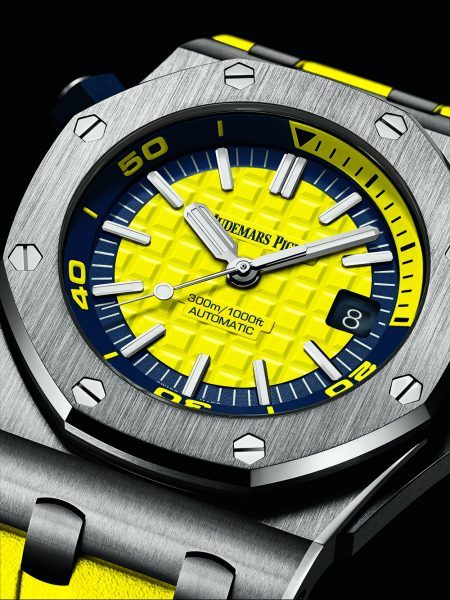
After launching the Royal Oak Offshore Diver Chronograph in 2016, Audemars Piguet followed it up at SIHH 2017 with new, colorful versions of the non-chronograph Audemars Piguet Royal Oak Offshore Diver. The first version of this luxury dive watch was launched in 2010, followed by a ceramic version in 2013. AP refers to the new models as “funky color editions;” each has a 42-mm case made of stainless steel with a sapphire caseback through which you can see the in-house automatic Caliber 3120. The dials — in choices of blue, yellow, white, green, and orange, with matching rubber straps — all feature Audemars Piguet’s familiar “Méga Tapisserie” motif and color-coordinated diving scales on the inner rotating divers’ bezel. You can read more here.
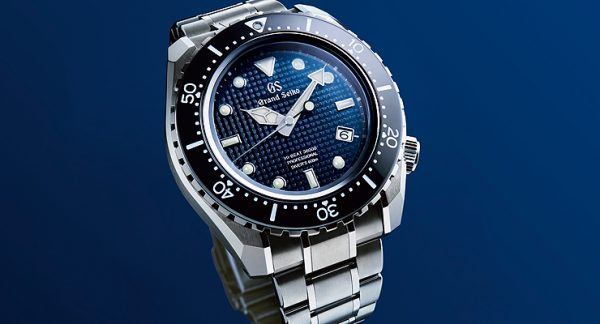
Japan’s Grand Seiko had its biggest year ever this year after the news broke at Baselworld that is was becoming an independent brand separate from the monolithic Seiko entity. This meant that the brand was re-releasing all its classic timepieces with rebranded dials. Of course, they also released new models including the Grand Seiko Hi-Beat 36000 Professional 600m Diver, which became the first-ever mechanical Grand Seiko dive watch. The watch’s case, made of high-intensity titanium, measures 46.9 mm in diameter and 17 mm thick. Designed with saturation diving in mind, it features the valve-free helium-resistance technology pioneered by Seiko in some of its earliest divers’ watches, which uses an exceptionally heavy-duty case construction and an L-shaped gasket. You can read more here.
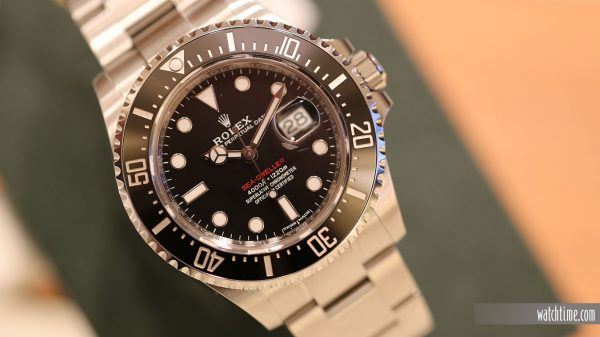
It was another big year of anniversaries in the luxury watch world. While Omega marks 60 years of the Speedmaster and Patek Philippe, 40 years of the Aquanaut, Rolex celebrates the half-century mark for its extreme divers’ watch, the Oyster Perpetual Sea-Dweller, by launching an all-new model, with a larger case and modern caliber. The original Rolex Sea-Dweller, created in 1967, was designed as a resilient and useful tool for professional deep-sea divers of that era. Among its many notable features was a helium escape valve, patented by Rolex that same year, which preserved the watch’s water-resistance while regulating the air pressure accumulated inside its case during the decompression phases of deep-water saturation dives. You can read more about the latest version of what is probably the world’s most famous dive watch here.
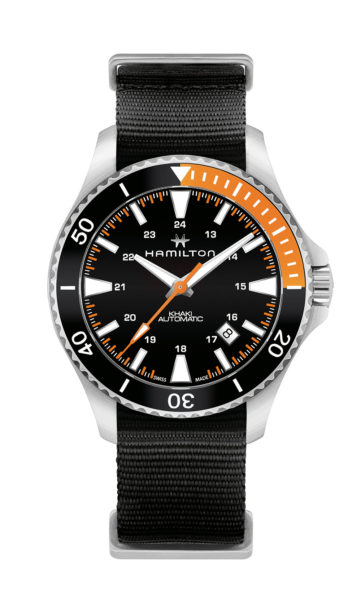
You may remember the Hamilton Frogman from 2016, but this year, the brand released a more casual dive watch with the Khaki Navy Scuba that should definitely appeal to all the desk divers out there. To create a more streamlined, less military-industrial look for the Hamilton Khaki Navy Scuba, the brand dispensed with the Frogman’s chunky crown-protection device (which was an echo of the 1951 watch that inspired it) and helium-release valve, scaled the 46-mm case down to a more wrist-friendly 40 mm, and opted for stainless steel rather than titanium for the case material. The Khaki Navy Scuba’s water resistance is a more common (but still impressive) 100 meters as compared to the Frogman’s “extreme” 1,000-meter level. Elements that have been retained include the black dial with luminescent triangular hour markers, the screw-down crown, and the unidirectional rotating bezel, here available in black with an orange-highlighted sector for the first 15 minutes of dive time. Orange is also used for dial highlights like the central seconds hand and minute track. You can read more here.
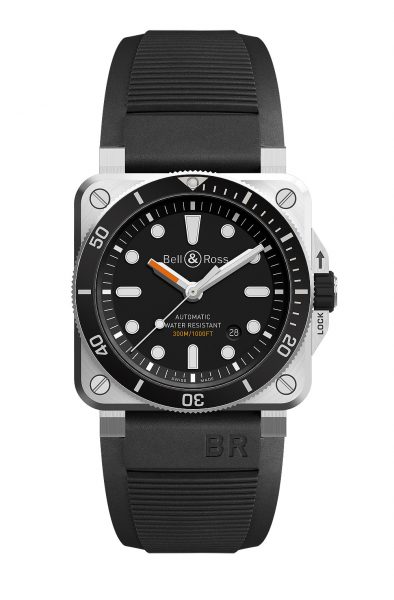
To develop the BR 03-92 Diver, Bell & Ross consulted not only its watchmakers, but also experienced divers and other underwater experts, its goal being to develop a truly professional-grade diving instrument that would meet the strict ISO 6425 international standards that timepieces must meet before being labeled as as such. Among these criteria are a minimum water resistance of 100 meters, a calibrated bezel for preselecting dive times that is protected against accidental rotation, and indexes that are legible at a predetermined distance while underwater. (For a full explanation of the ISO 6425 criteria, and why many so-called dive watches fail to meet them, click here.) The BR 03-92 hits these marks with flying colors: its squared ergonomic case, made of satin-polished steel and measuring 42 mm in diameter, is water-resistant to 300 meters. It is equipped with a 60-minute uni-directional bezel with a luminescent dot at 12 o’clock for orientation. Its crown is protected by an impact-resistant guard and is fitted with a rubber insert for easy handling. You can read more here.
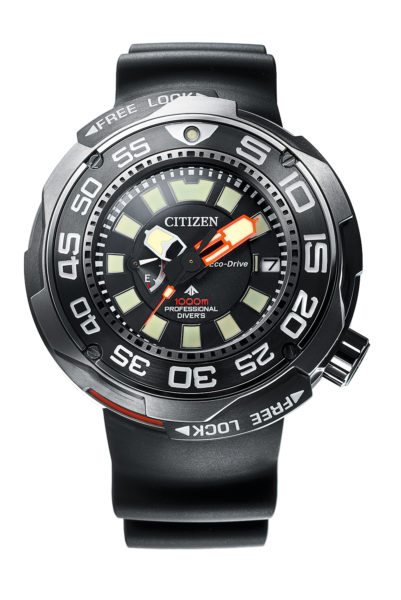
In a sea of retro-inspired dive watches launched during Baselworld 2017, Citizen stood out as one of the few brands that dared to launch something radically new. The Citizen Promaster Eco-Drive Professional Diver 1000m is the world’s first solar-powered watch capable of saturation diving – and the Japanese brand’s second 1,000-meter diver. The Promaster Eco-Drive Professional Diver 1000m (Reference BN7020-09E) was one of three major Promaster additions introduced in Basel this year and, thanks to its uncompromising look and a 52.5-mm-large and 22.2- mm-thick titanium case, also the one that stood out the most. Perhaps more importantly, it’s one of the few watches that rightfully fall into the category of “extreme dive watches.” In other words, it’s a contemporary tool watch. Its primary function is to withstand even extremes of pressure and to safely measure elapsed time under water, even for saturation divers, and definitely not to fit under a French cuff dress shirt. The Promaster 1000m is ISO 6425 compliant and has been tested “for 15 days in a pressurized chamber that contains helium and oxygen or even 100-percent helium gas” and then reverted “back to atmospheric pressure within three minutes after high-speed decompression.” Citizen also partnered with the Japan Agency for Marine-Earth Science and Technology (JAM- STEC) to test the Promaster 1000m under operating conditions. The Promaster 1000m was most likely the most “serious” dive watch introduced in 2017, and given its equally serious price tag of $2,300, there is probably only one thing we could wish for: a second version for Baselworld 2018, powered by one of the brand’s well-known mechanical movements. Learn more here.


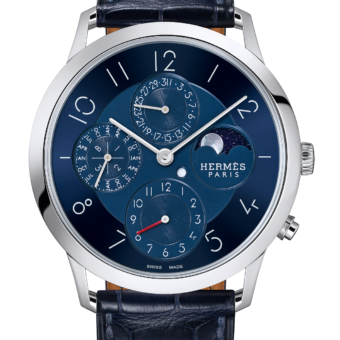
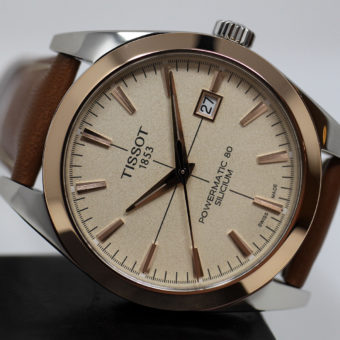

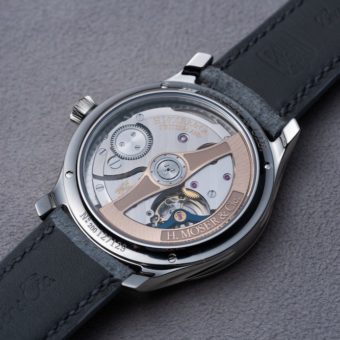
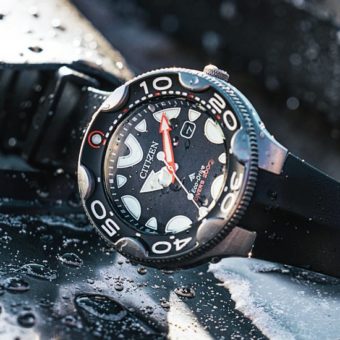
I love the AP watch, but only millionaires can afford AP without a second mortgage on their house. The Citizen is excellent, but is more a work watch than a general purpose runabout. My choice is the Hamilton Khaki which I could probably afford if I could hid the purchase from my wife.